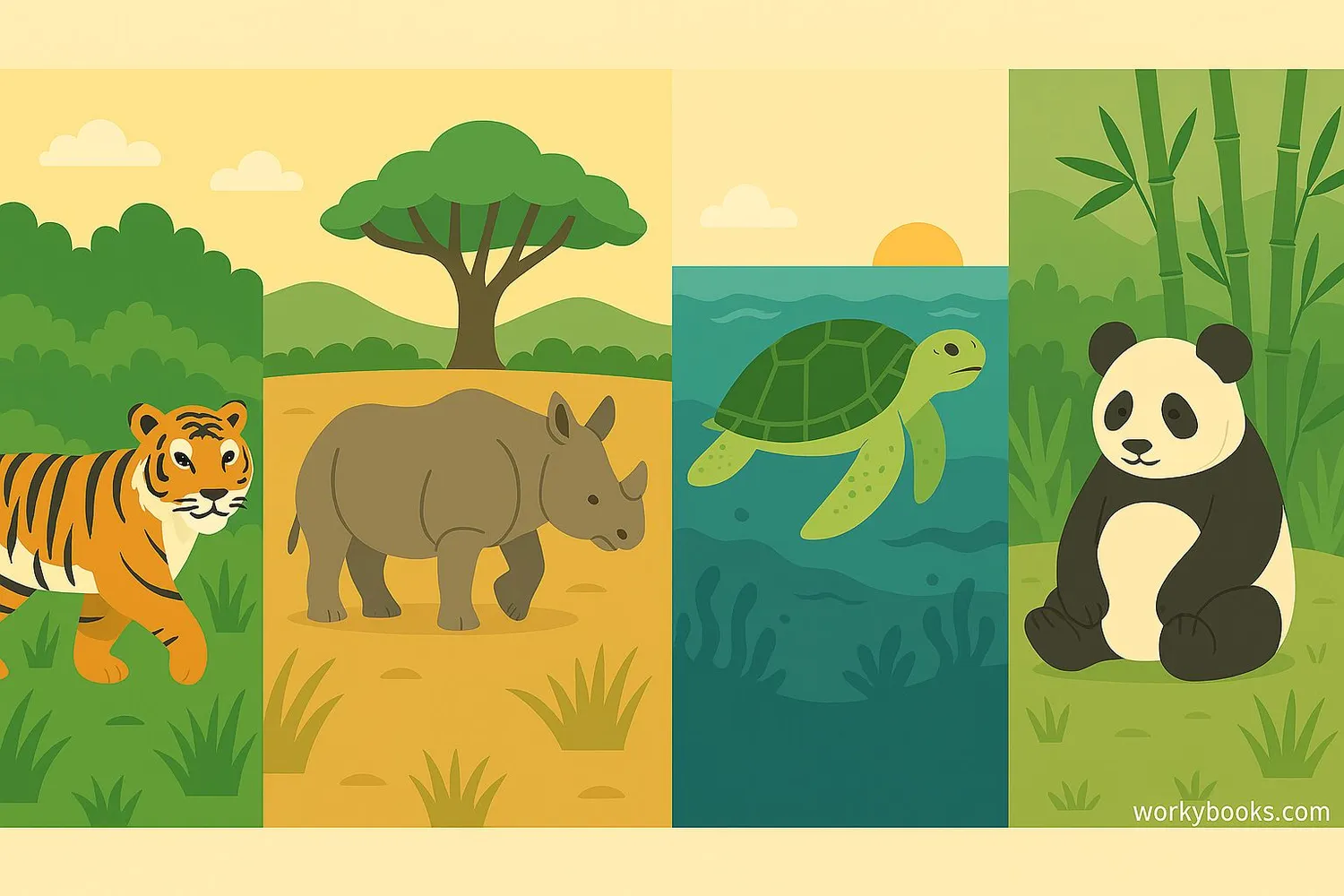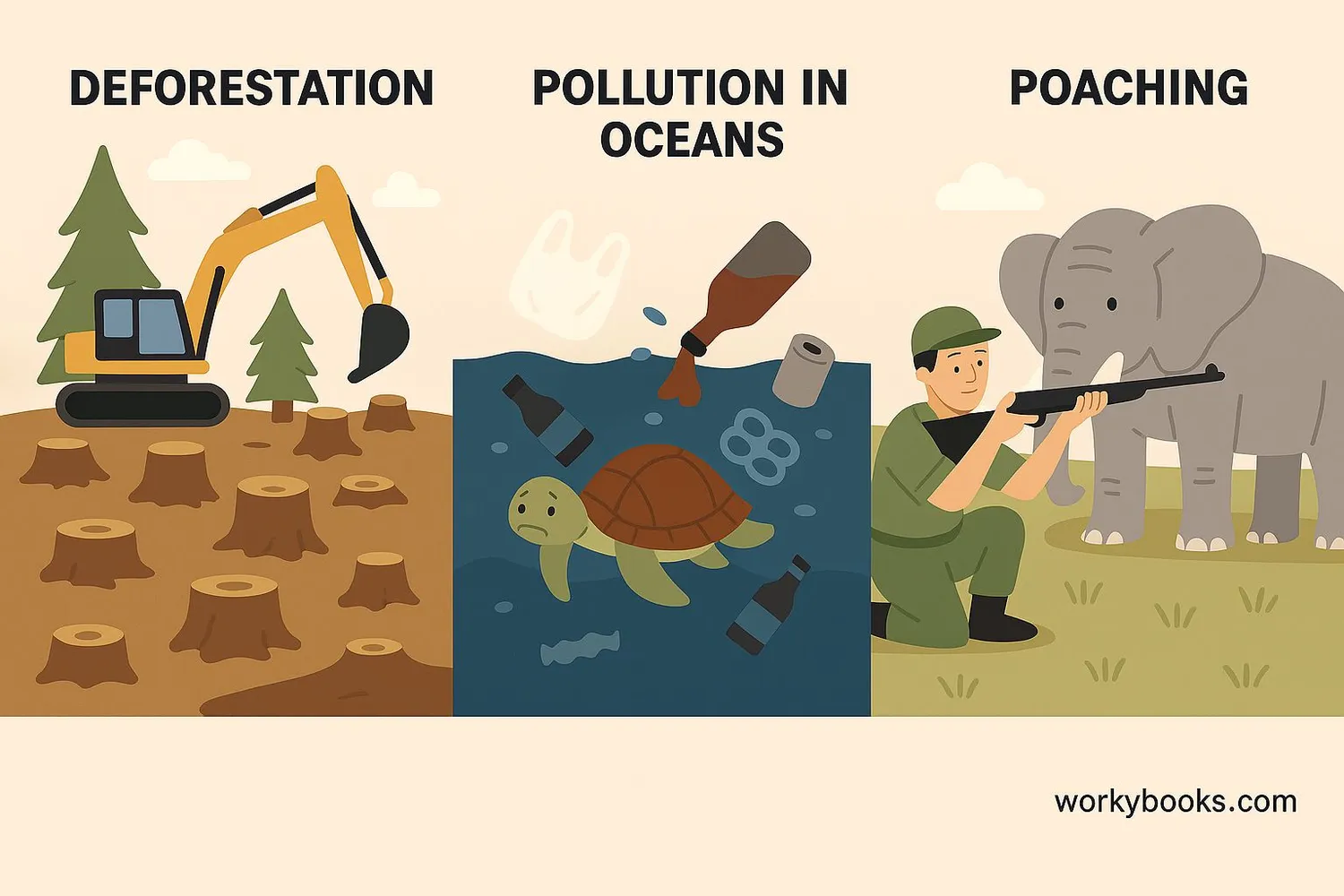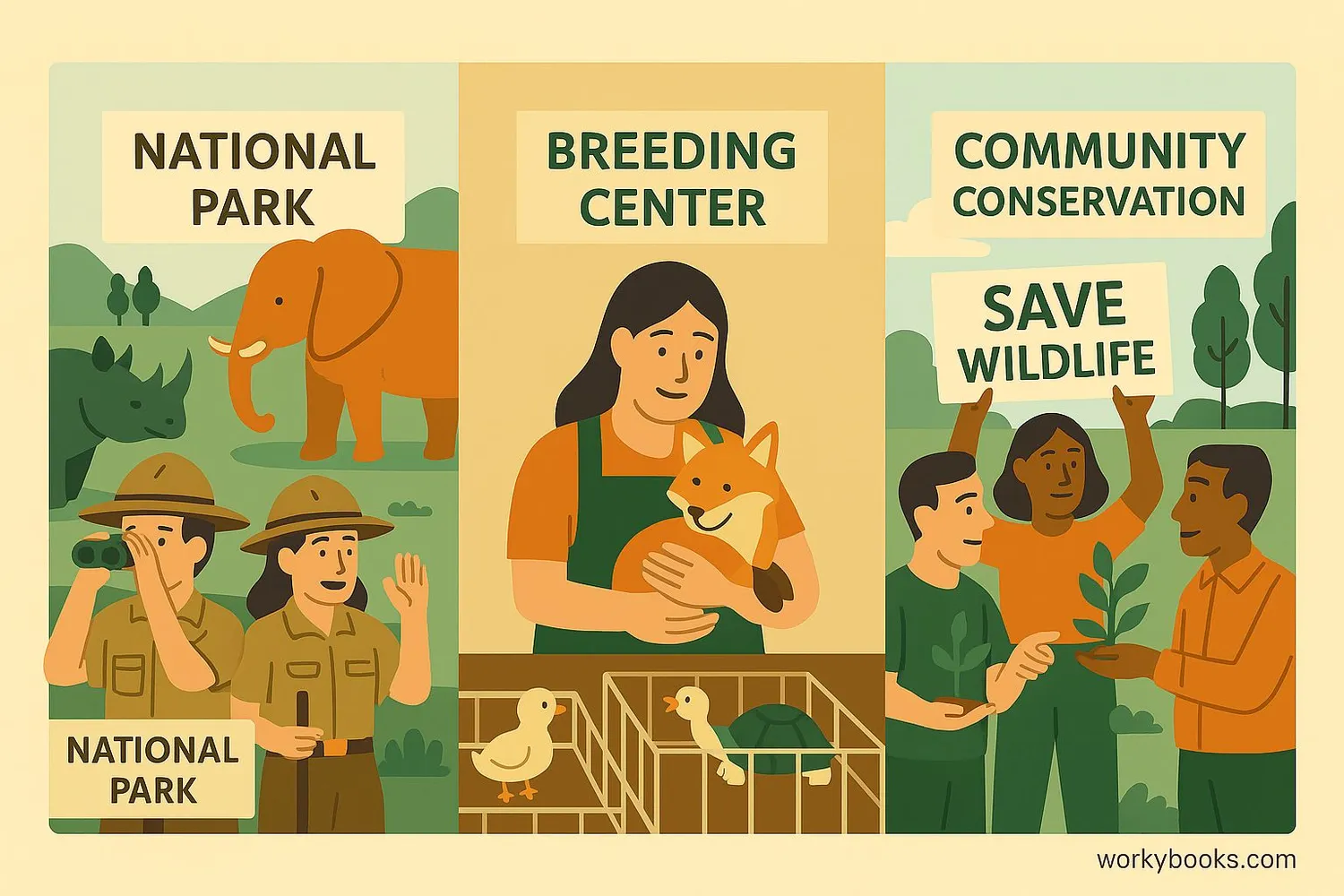Endangered Species - Definition, Examples, Quiz, FAQ, Trivia
Discover why some animals and plants are at risk and how we can protect them
What Are Endangered Species?

Endangered species are plants and animals that are at risk of disappearing forever, which we call extinction. Scientists have created a special list called the IUCN Red List that helps us understand how close different species are to extinction.
There are different categories on the Red List:
• Least Concern: Species doing well
• Vulnerable: Starting to face threats
• Endangered: High risk of extinction
• Critically Endangered: Extremely high risk
• Extinct in the Wild: Only exist in captivity
• Extinct: Gone forever
Conservation Success!
The bald eagle was once endangered but recovered thanks to conservation efforts. It was removed from the endangered list in 2007!
Why Species Become Endangered

Animals and plants become endangered for many reasons. The biggest threats include:
Habitat Loss
When forests are cut down or wetlands are filled, animals lose their homes
Pollution
Chemicals in water, air, and soil can harm plants and animals
Overhunting
Too many animals are hunted for fur, tusks, or as trophies
Climate Change
Changing weather patterns affect habitats and food sources
Invasive Species
New species introduced to an area can harm native ones
Example: Orangutans are endangered because the forests where they live are being cut down for palm oil plantations. Tigers face threats from habitat loss and poaching for their skins and body parts.
Biodiversity Matters!
Every species plays an important role in its ecosystem. When one disappears, it affects many others in what we call the "web of life".
Conservation Efforts

People around the world are working to protect endangered species through conservation. Here are some important ways we help:
Protected Areas
National parks and wildlife refuges provide safe habitats
Laws & Treaties
Laws like the Endangered Species Act make it illegal to harm protected species
Community Action
Local communities help protect wildlife in their areas
Other important conservation methods include:
• Breeding programs: Zoos and conservation centers help animals have babies to increase their numbers
• Habitat restoration: Planting trees and cleaning rivers to restore damaged ecosystems
• Anti-poaching patrols: Rangers protect animals from illegal hunting
• Education: Teaching people why conservation matters
Through these efforts, we've seen amazing species recovery stories like the American bison, gray wolf, and humpback whale.
Conservation Quiz
Test your knowledge about endangered species and conservation with this quiz!
Frequently Asked Questions
Here are answers to common questions about endangered species:
Wildlife Trivia
Discover fascinating facts about endangered species and conservation:
Recently Extinct
The Tasmanian tiger went extinct in 1936, just 59 days after being granted protected status. The last known individual died in a zoo in Hobart, Tasmania.
Plant Conservation
The Svalbard Global Seed Vault in Norway preserves over 1 million seed samples to protect plant biodiversity from disasters. It's nicknamed the "Doomsday Vault".
Slow Recovery
Some species like the giant tortoise reproduce very slowly. A female may lay only 10-20 eggs per year, making population recovery a long process even with protection.
Keystone Species
When wolves were reintroduced to Yellowstone National Park, they transformed the entire ecosystem - changing river courses by reducing elk overgrazing!


